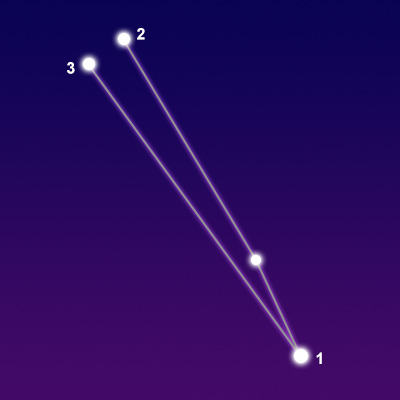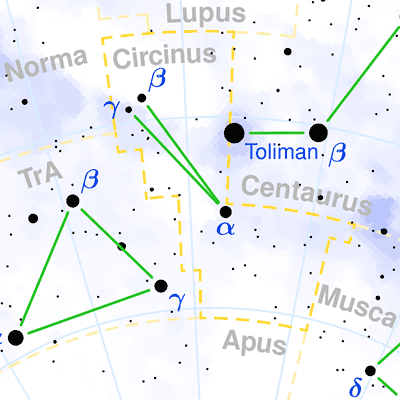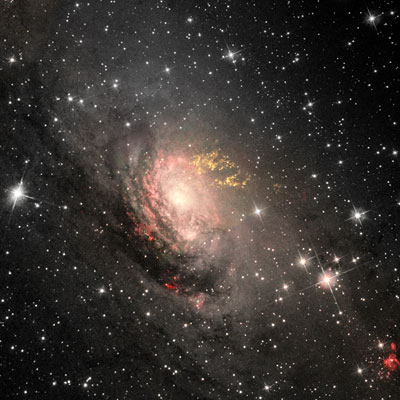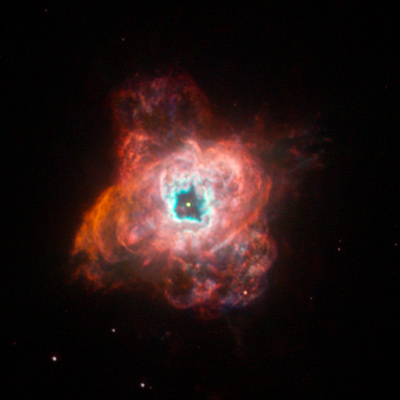Pronunciation:
(SER-sin-us)Abbreviation:
CirGenitive:
CirciniRight Ascension:
15 hoursDeclination:
-60 degreesArea in Square Degrees:
93Crosses Meridian:
9 PM, June 20Visible Between Latitudes:
20 and -90 degreesThe constellation Circinus, the drawing compass, is located in the southern hemisphere of the sky. It is visible at latitudes south of 30 degrees from March through May. It is the fourth smallest constellation in the night sky, covering an area of only 93 square degrees. It is bordered by the constellations Centaurus, Musca, Apus, Triangulum Australe, Norma and Lupus.
There is no mythology associated with Circinus. It is one of the 14 southern constellations named by French astronomer Abbé Nicolas Louis de Lacaille after his trip to the Cape of Good Hope in South Africa in 1756. Its name means “the compass” in Latin. It was named for its shape, which resembles a drawing compass. Lacaille originally named it Le Compass and placed it next to Triangulum Australe and Norma, which he depicted as a surveyor's level, a compass, and a set square and ruler in a set of draftsman's instruments. It was given the name Circinus in 1763 when Lacaille published an updated sky map with Latin names for the constellations.

points of interest below© Sea and Sky

© Torsten Bronger CC BY-SA 3.0
Beta Circini
Gamma Circini
N/A
N/A
Blue-White Subgiant Star
Binary Star System
4.07
4.48
Circinus is a dim constellation with only one star brighter than magnitude 4. The brightest star is Alpha Circini with a visual magnitude of 3.18. It is a binary star system located approximately 53 light years from Earth. The second brightest star in the constellation is Beta Circini with a magnitude of 4.07. It is a blue-white subgiant star that is about 97 light years from our solar system. Gamma Circini is the third brightest star with a magnitude of only 4.48. It is a binary star system that lies about 509 light years away.
Circinus contains no Messier objects. The Milky Way runs through the constellation, so it contains a number of deep-sky objects. The Circinus Galaxy is a spiral galaxy that is known for its colorful rings of gas. Circinus X-1 is an X-ray binary star that includes a neutron star. The star system emits jets of x-rays similar to those found in black holes. NGC 5315 is a planetary nebula that was created when an old star ejected its outer layers of gas into space. These objects are extremely dim and can only be seen with large telescopes.

© Judy Schmidt from USA / CC BY 2.0

the Hubble Space Telescope



